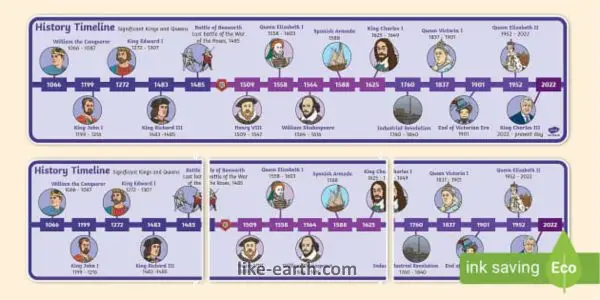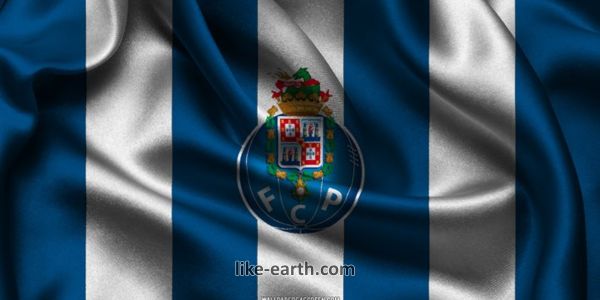Interactive Timeline of the Royal Family’s History

Introduction: The Royal Family’s Legacy
Interactive Timeline of the Royal Family’s – The British royal family history spans centuries, full of fascinating events, significant milestones, and extraordinary transformations. From the early monarchy to today’s modern-day royals, their journey has been one of both privilege and responsibility. The monarchy has faced challenges, political intrigue, and world-changing events, and throughout it all, the royal family has continued to evolve.
This interactive timeline highlights key moments that define the royal family’s journey. It serves as a captivating exploration of their legacy, focusing on the fascinating events that have shaped the British monarchy as we know it today.
The Early Years: From Normans to Plantagenets
The roots of the modern royal family can be traced back to the Norman Conquest of England in 1066, when William the Conqueror claimed the throne after defeating King Harold II at the Battle of Hastings. The Norman dynasty set the foundation for the British monarchy, and over time, the monarchy evolved through various royal houses.
The Plantagenet dynasty, which began with Henry II in 1154, played a crucial role in shaping the royal family’s power and influence. Key events such as the signing of the Magna Carta in 1215 established important principles of governance that continue to affect the monarchy’s role today.
The Tudor Dynasty: The Birth of Modern Monarchy
The Tudor era is one of the most captivating periods in royal history. It was during the reign of Henry VIII that the English monarchy underwent a significant transformation. His break from the Catholic Church and the formation of the Church of England were monumental in shaping the future of both the nation and the royal family.
Queen Elizabeth I, his daughter, ushered in a golden age, creating a legacy of power, exploration, and cultural influence that still resonates today. The Tudor dynasty ended with the death of Elizabeth in 1603, marking a pivotal point in the monarchy’s evolution.
The Stuart Era: Civil War and Revolution
The Stuart period brought both triumph and tragedy for the royal family. The early Stuart kings, including James I and Charles I, faced mounting tension between monarchy and parliament. This ultimately led to the English Civil War (1642–1651) and the execution of Charles I in 1649, an unprecedented moment in British history.
The monarchy was temporarily abolished, and England became a republic under Oliver Cromwell. However, the monarchy was restored in 1660 with Charles II. The Stuart era came to a close with the Glorious Revolution of 1688, which saw William of Orange take the throne, leading to the establishment of constitutional monarchy.
The Hanoverians: The Rise of the Modern Monarchy
The Hanoverian dynasty began with the accession of George I in 1714. The early Hanoverians had to adapt to a rapidly changing political environment. With the rise of parliamentary democracy, royal power diminished, and the monarch’s role became more symbolic.
George III’s reign (1760–1820) saw the loss of the American colonies and a series of personal challenges, including bouts of mental illness. His son, George IV, had a lavish reign marked by cultural achievements and personal scandals. By the Victorian era, Queen Victoria (1837–1901) redefined the monarchy’s role, bringing stability, propriety, and a sense of national pride.
The Windsors: The Modern Royal Family
In 1917, during World War I, King George V changed the royal family’s surname from the House of Saxe-Coburg and Gotha to the House of Windsor due to anti-German sentiment. The Windsor dynasty continues to the present day, with Queen Elizabeth II, who ascended the throne in 1952, becoming the longest-reigning British monarch in history.
The 20th century saw the monarchy evolve alongside major social changes. The royal family embraced new technologies, such as television, and began to modernize their image to remain relevant in the eyes of the public. The royal family’s presence on the world stage continues to be felt today, as they navigate the challenges of modern life while maintaining their royal traditions.
Interactive Timeline: Key Royal Family Events
- 1066: William the Conqueror claims the throne of England, establishing the Norman dynasty.
- 1215: King John signs the Magna Carta, limiting the power of the monarchy.
- 1534: Henry VIII breaks from the Catholic Church, creating the Church of England.
- 1603: The death of Queen Elizabeth I leads to the Stuart dynasty and the union of England and Scotland.
- 1649: King Charles I is executed, and the monarchy is abolished during the English Civil War.
- 1660: The monarchy is restored under Charles II, ending the republican rule.
- 1917: George V changes the royal family’s name to Windsor during World War I.
- 1952: Queen Elizabeth II ascends to the throne, becoming the longest-reigning monarch in British history.
Conclusion: The Legacy of the Royal Family
The royal family has endured through centuries, adapting to political, social, and cultural changes. Their legacy continues to shape the history of the United Kingdom and the world. From early medieval monarchs to today’s royal family, their influence is undeniable. As we explore the history of the royal family, we gain insight into the complex relationship between the monarchy and the people they serve.
For more engaging content on royal history, be sure to visit Like Earth.
To stay updated with the latest royal family news, join our WhatsApp community at WhatsApp channel. Interactive Timeline of the Royal Family’s



